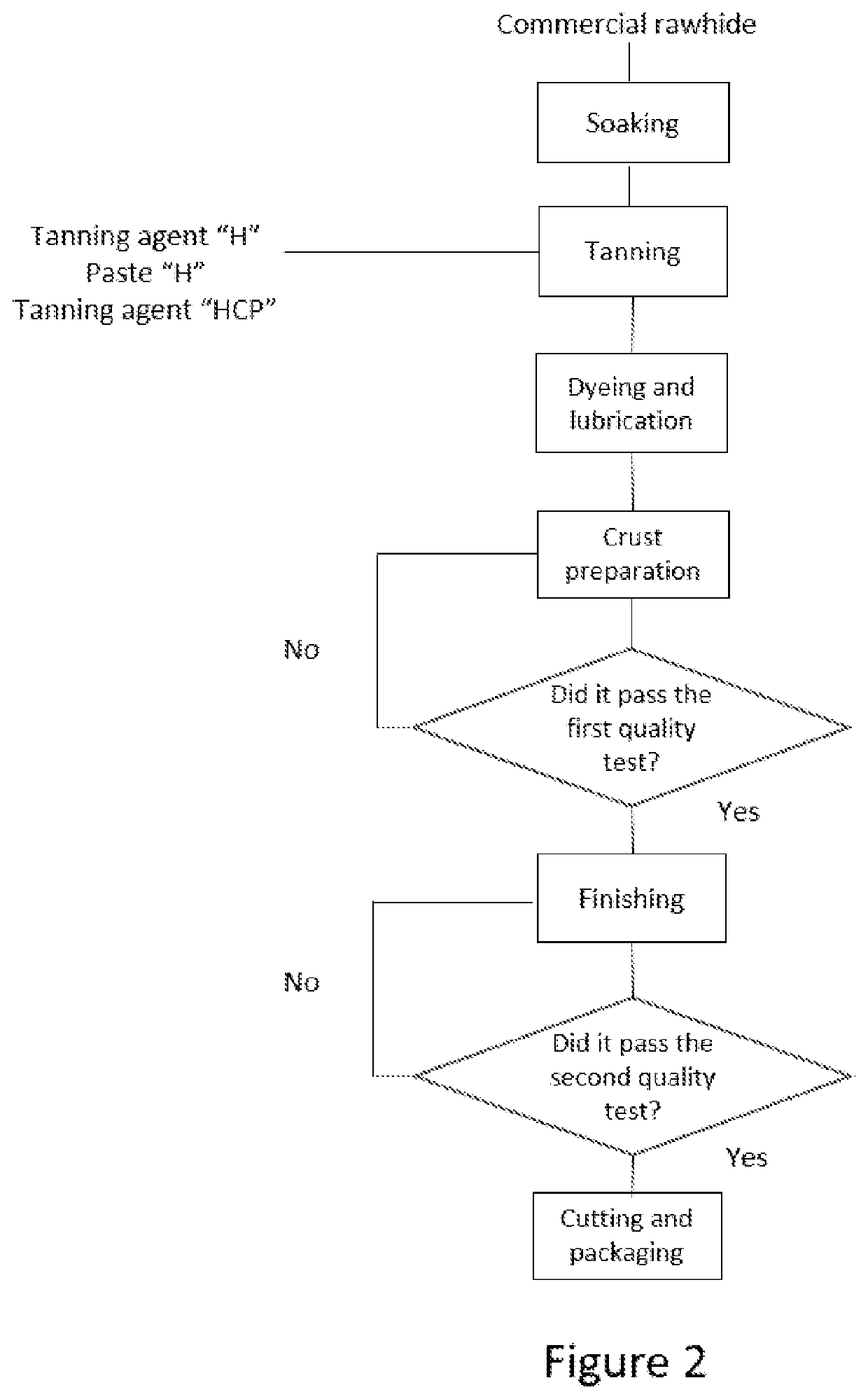Method for producing sustainable leather using by-products from parts of all varieties and species of the genus persea plant including among them both the american species and the hass variety as well
a technology of sustainable leather and by-products, which is applied in the field of vegetable tanning methods, can solve the problems of generating greenhouse gases as it decomposes
- Summary
- Abstract
- Description
- Claims
- Application Information
AI Technical Summary
Benefits of technology
Problems solved by technology
Method used
Image
Examples
example 1
) 50 LEATHERS
EXAMPLE 2) 100 LEATHERS
[0056]Forty kilograms of Persea fruit at various stages of maturation and 40 kg of seeds were received. They were left to stabilize for 24 hours at an ambient temperature that fluctuated between 24 and 26 degrees.
[0057]Subsequently, the “tanning agent H” was elaborated.[0058]a) 40 kg of avocado seeds of the Persea genus at various stages of ripening were crushed.[0059]b) The seeds of avocado trees of the Persea genus obtained from stage a), in a proportion of 24.9% of seeds, and 75.1% of water (percentages in base weight),[0060]c) the product from step b) was heated at a temperature of 60° C. for 22 minutes;[0061]d) the product from step c) was filtered through rapid filtration filters with a sieve size of 100 microns to obtain: 120 liters of a filtered liquid called “tanning agent H” which has an orange color, and which is derived from the seed of avocado trees genus “Persea”; this solution was used for the tanning run of 50 hides using 11.904 ki...
PUM
| Property | Measurement | Unit |
|---|---|---|
| Temperature | aaaaa | aaaaa |
| Temperature | aaaaa | aaaaa |
| Temperature | aaaaa | aaaaa |
Abstract
Description
Claims
Application Information
 Login to View More
Login to View More - R&D
- Intellectual Property
- Life Sciences
- Materials
- Tech Scout
- Unparalleled Data Quality
- Higher Quality Content
- 60% Fewer Hallucinations
Browse by: Latest US Patents, China's latest patents, Technical Efficacy Thesaurus, Application Domain, Technology Topic, Popular Technical Reports.
© 2025 PatSnap. All rights reserved.Legal|Privacy policy|Modern Slavery Act Transparency Statement|Sitemap|About US| Contact US: help@patsnap.com


